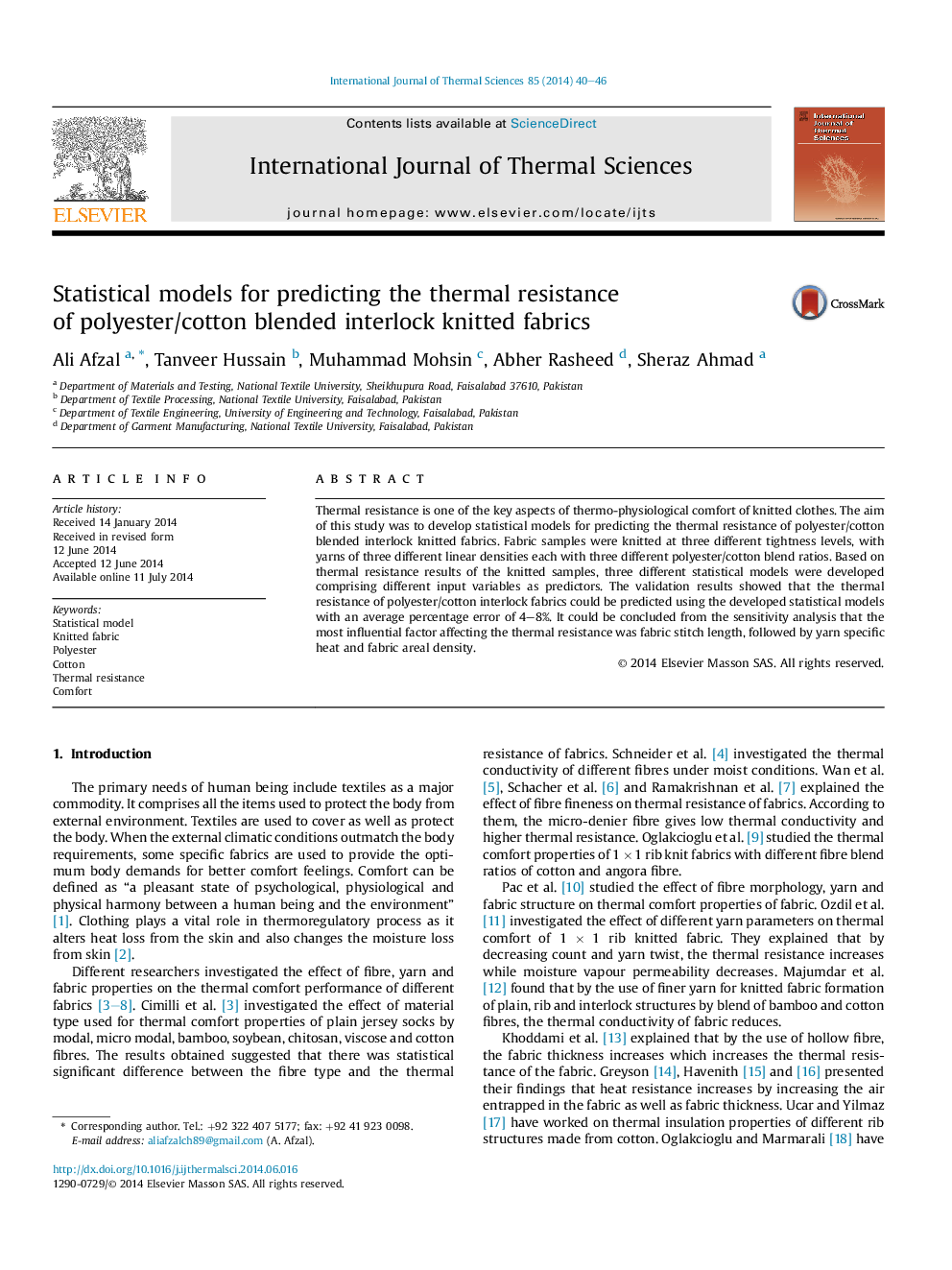| Article ID | Journal | Published Year | Pages | File Type |
|---|---|---|---|---|
| 668225 | International Journal of Thermal Sciences | 2014 | 7 Pages |
•Yarn count and fabric areal density are inversely proportional to thermal resistance.•Specific heat of yarn, stitch length and fabric thickness are in direct proportion to thermal resistance.•Influences of individual input parameters on the interlock fabric thermal resistance are analysed.•Three different response surface regression models are developed.•Model developed using planned knitting parameters generate an average error of less than 5%.
Thermal resistance is one of the key aspects of thermo-physiological comfort of knitted clothes. The aim of this study was to develop statistical models for predicting the thermal resistance of polyester/cotton blended interlock knitted fabrics. Fabric samples were knitted at three different tightness levels, with yarns of three different linear densities each with three different polyester/cotton blend ratios. Based on thermal resistance results of the knitted samples, three different statistical models were developed comprising different input variables as predictors. The validation results showed that the thermal resistance of polyester/cotton interlock fabrics could be predicted using the developed statistical models with an average percentage error of 4–8%. It could be concluded from the sensitivity analysis that the most influential factor affecting the thermal resistance was fabric stitch length, followed by yarn specific heat and fabric areal density.
